On the Pine Ridge Indian Reservation, an Oglala Lakota Indian reservation in South Dakota, the schools were aging. The only building that didn't need a rehab was the Oglala Lakota County School District Virtual High School — and that's because it only existed in cyberspace. To provide the 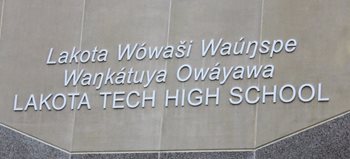 community, which has one of the highest poverty rates in the country, with what it needed would require more than renovations; it would require a new brick-and-mortar building for a proposed high school, which had never physically existed before.
community, which has one of the highest poverty rates in the country, with what it needed would require more than renovations; it would require a new brick-and-mortar building for a proposed high school, which had never physically existed before.
But a unique partnership between the school system, an investment banking firm specializing in public finance, and GROW South Dakota, a NeighborWorks network organization, has resulted in stronger schools by using new market tax credits. The result includes renovated Rockford, Batesland and Wolf Creek Elementary schools and the new Lakota Tech High School, which opened in 2020. This spring will mark the first graduates who started there as freshmen.
Toby Morris, senior vice president of Colliers Securities, said he had received a hopeful call from the district, asking for his expertise in figuring out financing for the project. "It's difficult to do financing for a public school on a reservation because there is so much trust land, which in turn does not allow the district to access the conventional capital markets," he explains. But the school district was quickly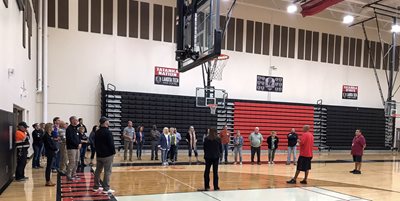 growing. It already had 1,800 students spread among four buildings for pre-K to eighth grade students, and the virtual high school.
growing. It already had 1,800 students spread among four buildings for pre-K to eighth grade students, and the virtual high school.
The schools needed more space — and soon. As Morris researched new market tax credits, he realized that in order to get collateral and security for the tax credits, they had to take a mortgage on the property. In South Dakota, public property is not able to be mortgaged. But Morris engineered an innovative solution where GROW SD would own the buildings and lease them to the school district, and during the compliance period, the district would take back ownership. Meanwhile, they could use the tax credits to facilitate the financing to complete the renovations and new construction of the schools.
"It was the beginning of a wonderful partnership," Morris says.
Before 2019, the online high school had 125 students and the graduation rate on the reservation was 23%. When the doors of the newly constructed career and technical education (CTE) high school opened, 300 students had enrolled.
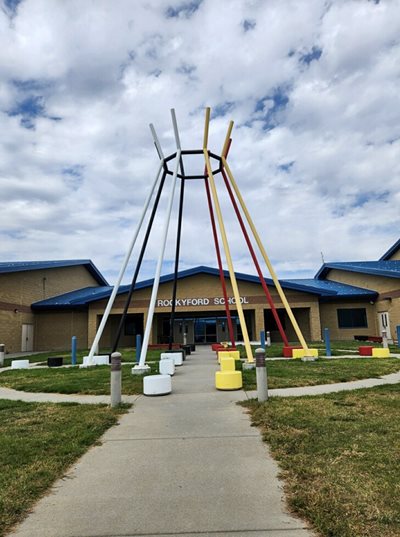 "Immediately, the school went to full capacity," says Lori Finnesand, CEO of GROW SD.
"Immediately, the school went to full capacity," says Lori Finnesand, CEO of GROW SD.
Another long-term challenge to consider when building the school was to provide housing for school employees. Morris and the school district, working with the South Dakota Housing Development Authority, were able to develop a flexible financing package to accommodate the housing that was desperately needed for teachers and staff.
GROW SD was involved in four separate new markets tax credit projects for four schools in the school district, which sits in South Dakota's eighth largest county, at 2,093.6 square miles. Ninety miles separate the furthest schools.
"It's an hour and a half drive from one point of the school district to the other," says Finnesand, whose own office is eight hours from the schools (with no traffic). The school system puts on more than a million miles a year in bussing students.
Why did GROW SD get involved? "We understand that schools, especially on the reservation, are as much for the community as they are for education," Finnesand says. A school may be the only building large enough to hold cultural activities. "A lot of family life ends up centering around the schools." And boosting schools boosts the whole community.
Lori Moen, chief operating officer at GROW SD, adds that in impoverished areas, "education is one way to remove poverty by earning a high school diploma. The staff at the schools are mentors to the children and their families. The school is a holistic resource."
Before the CTE high school opened, 200 eighth grade students graduated each year. "We surveyed the community," Morris said. "We wanted to find out the specific trades they wanted to learn."
The poll showed that 90% of those said they'd attend a high school if there was one. Nearly 100% of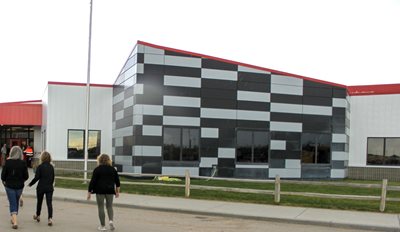 the students at the school are Native American; the board and administration is 100% Native American.
the students at the school are Native American; the board and administration is 100% Native American.
GROW SD "had long established relationships with the tribe," says Mel Willie, director of Native Strategy & Partnerships at NeighborWorks America. "They have learned over the years how to culminate this relationship on a foundation of trust and respect, which allowed them to extend various programs and services to the tribal community."
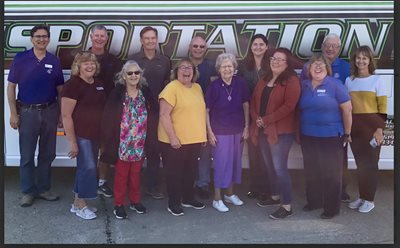 Working with the schools, which GROW SD visited for the first time in September 2023, has been a unique opportunity for partnership and it speaks volumes to the impact that partnerships can have for a community, he says.
Working with the schools, which GROW SD visited for the first time in September 2023, has been a unique opportunity for partnership and it speaks volumes to the impact that partnerships can have for a community, he says.
"It has been a dream for many principals in our district and also teachers and community members that we would one day have a public high school again," shares Connie Kaltenbach, superintendent of the school district. Before, when students graduated from the 8th grade, they had options of going to schools nearby, including off reservation or to Little Wound High School in Kyle. And of course they had the online option. Some attended and were absolutely successful, she says. "But when we traced our eighth graders to see if they were successful in high school, we found that half dropped out in their freshman year or were not attending."
So the goal was not to take away from the other high schools in the region, but to shore up the lower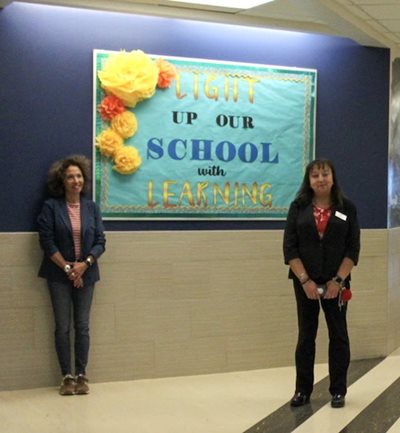 schools and to form a school that could serve the high school students who didn't feel they had a place to go. They initially estimated that 250 students would join their new high school. And when they opened — virtually, because it was during COVID – more and more students kept joining. When they opened the doors for students to attend in person, they started with 300 students. That number has grown, too.
schools and to form a school that could serve the high school students who didn't feel they had a place to go. They initially estimated that 250 students would join their new high school. And when they opened — virtually, because it was during COVID – more and more students kept joining. When they opened the doors for students to attend in person, they started with 300 students. That number has grown, too.
"Right away, we started thinking of how we could expand," Kaltenbach says.
When Elementary and Secondary School Emergency Relief (ESSER) funding came through, they started working on a second wing. ESSER money also helped with Wolf Creek's new cafeteria/multipurpose room. They're continuing to expand and look forward to the future on other projects.
"Trying to meet the needs of students in our area is something our school system has worked on for years," Kaltenbach says. Are they where they want to be? "We're getting there. We were able to add a football field and track this fall."
They're battling infrastructure issues such as problems with the water line, she says. But they were able to obtain, with the help of Morris, a housing grant to help provide for housing for the much-needed teachers for the schools. The grant allowed them to fund a water tower, which would help not only the homes, but the schools and the town. And it would take some of the pressure off of other water lines in the region.
"Everything is related," says Kaltenbach. "We're moving forward. This is the heart of our community."
Willie hopes there are more partnerships like this in more Native communities. Over the past three years, NeighborWorks presented 38 grants to organizations who were working alongside and at the invitation of tribes to offer support. "I'm excited about the possibilities and the opportunity for our network organizations to have real impact."
11/16/2023

